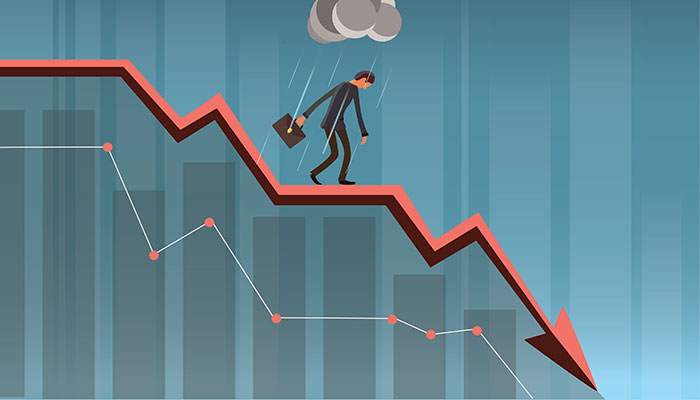In an age where Western markets are nervous about a rising China, long-established firms are being leap-frogged by recent market entrants and many workers are worried about having their jobs outsourced or automated, it’s a good time for some fresh thinking about how competition works.

Why? Tech retail chain Dick Smith Electronics went bust on 3 May 2016 after creditors placed what was left of the company in liquidation.
Dr Chris Baumann, an Associate Professor at Macquarie Business School, is attempting to provide an answer to that question in a more comprehensive manner than many of his peers may have before. More on that shortly, but first some background on why it is such a challenging question.
“The question isn’t just why some companies fail and some succeed,” Baumann said. “There’s also the issue of why so many once-successful companies eventually fail.”
Baumann illustrates this point with reference to the airline industry.
“Companies such as Pan Am and TWA in the US, CP Air in Canada, Swissair in Switzerland and Ansett in Australia once set quality standards in the airline industry, pioneered new aeroplane designs, had passionate staff and were admired brands. These airlines were productive – in the sense they continued to fly passengers from Point A to Point B – until the bitter end.
"But at some point, they found themselves being outcompeted by rivals."
Five years ago, who would have predicted Atlassian, an enterprise-software company located thousands of kilometres away from Silicon Valley (here in Australia), would be worth more than US$25 billion?”
Naturally, the reasons are diverse, but in Baumann’s terminology, they lost their Competitive Productivity, or CP.
Baumann also notes academics, entrepreneurs and national governments also struggle with the obverse question – why do some companies succeed spectacularly when they possess no obvious comparative and/or competitive advantages?
“A few decades ago, who would have thought South Korea would become an educational, IT, and medical tourism powerhouse, and create an automotive-industry where companies such as Hyundai and Kia would be serious challengers – and in many cases surpass - to the likes of Volkswagen, Ford and Toyota?” Baumann asks.
“A decade ago, who would have imagined Huawei would be selling more smartphones than Apple? Five years ago, who would have predicted Atlassian, an enterprise-software company located thousands of kilometres away from Silicon Valley here in Australia, would be worth more than US$25 billion?”
East Asian airlines such as Singapore Airlines or latecomer brands such as China Airlines have long outperformed their counterparts in Europe and North America in terms of brand competitiveness with much better service and East Asian hospitality. To make their CP even more effective, they provide that better service at a lower price.
The boilerplate explanation
Economists, politicians, pundits and journalists seeking to explain why certain individuals, firms or nations outperform their competitors have typically made use of two concepts: productivity and competitiveness.

Output vs input: industry disruptors can wreak havoc on their competitors, says Associate Professor Baumann.
“Productivity is straightforward; it’s essentially the output you get from inputs,” Baumann says. Simply put: “If a car factory goes from making 100 vehicles a week to making 110 with the same input, that’s a 10 per cent productivity gain.”
Things get trickier with competitiveness.
“By definition, competitiveness is relative,” Baumann points out. “It’s about one party doing better than another, or better than the market overall. The problem is circular explanations stating that Business X outcompeted Business Y because it was more competitive aren’t all that helpful necessarily. Also, in today’s world, Business X can find itself abruptly sent to the wall by Business Z, especially if Business Z is an industry-disrupting innovator.”
Competitiveness + Productivity = Competitive Productivity
Baumann argues commonly accepted theories about both productivity and competitiveness have their limitations and scholars haven’t always devoted much attention to how they interact in the real world. That’s why he and his colleagues developed the concept of Competitive Productivity (CP) to “advance our understanding of competitiveness”.
Baumann’s working definition of CP is “an attitude and a behaviour directed at beating the competition through pragmatism.” (While ‘beating the competition’ usually means surpassing rivals, Baumann specifies that it can also mean an individual, business or country improving on its past performance).
Pragmatism brings us to another core economic idea – opportunity cost.
“No person, business or country can be good at everything,” Baumann says. “Attempting to be a top performer in one field means giving up the opportunity to dominate many other fields. It’s therefore important that politicians, CEOs and workers make pragmatic decisions about what goals to pursue.” In marketing terms: “you can’t be everything to everyone."
While every individual, firm or nation has its options constrained by the situation (be it geographic, political, cultural, economic or historical contexts), it still needs to make high-stakes decisions about what goals to pursue.
“The recent history of the Australian car industry shows what happens when there’s an overall lack of pragmatic thinking,” Baumann says.
“Australia could have decided, as many small population-high wage nations did, that it didn’t make sense to manufacture vehicles locally. Or it could have resolved that having a viable domestic car industry was important enough to make painful decisions. Given it was roughly two to four times more expensive to manufacture a car in Australia than East Asia, governments and management could have forced down the wages of local auto workers; naturally, this is not a popular option.

Answers: Associate Professor Chris Baumann hopes executives will use his Competitive Productivity theory to understand what forces underpin successful businesses.
"Alternatively, they could have taken the approach of erecting tariff walls to make imported vehicles much more expensive – and therefore less competitive – than locally made ones. Naturally, it obviously would have been a massive challenge to lift CP level to East Asian or Eastern European levels to regain competitiveness, and the rest is – more or less – history. I’m not arguing either of those things should have been done; I am arguing a failure to honestly acknowledge, address and manage CP issues can have enormous costs for countries, as well as companies and the workers they employ.”
Benchmark your way to success
When pressed on how workers, C-suite executives and policymakers can use CP to boost wages, company revenues and GDP, Baumann suggests realistic benchmarking; that is, seeking to identify then emulate best practice. To continue with the auto industry example, it is just possible Australia would still be manufacturing vehicles today if it had been able to learn from other nations (for example, Sweden, Germany and the US) that maintained car-making CP despite having relatively high labour costs, and that was not least driven by East Asian involvements with a ‘new wind’ to management practice.
“I’m hoping scholars from many disciplines will make use of CP to investigate what makes high achievers high achievers,” Baumann says. “I need all the assistance I can get to identify what characteristics individuals, companies and nations need to possess and develop, what attitudes they need to embrace and what actions they need to take if they aspire to be – even more - successful.”



